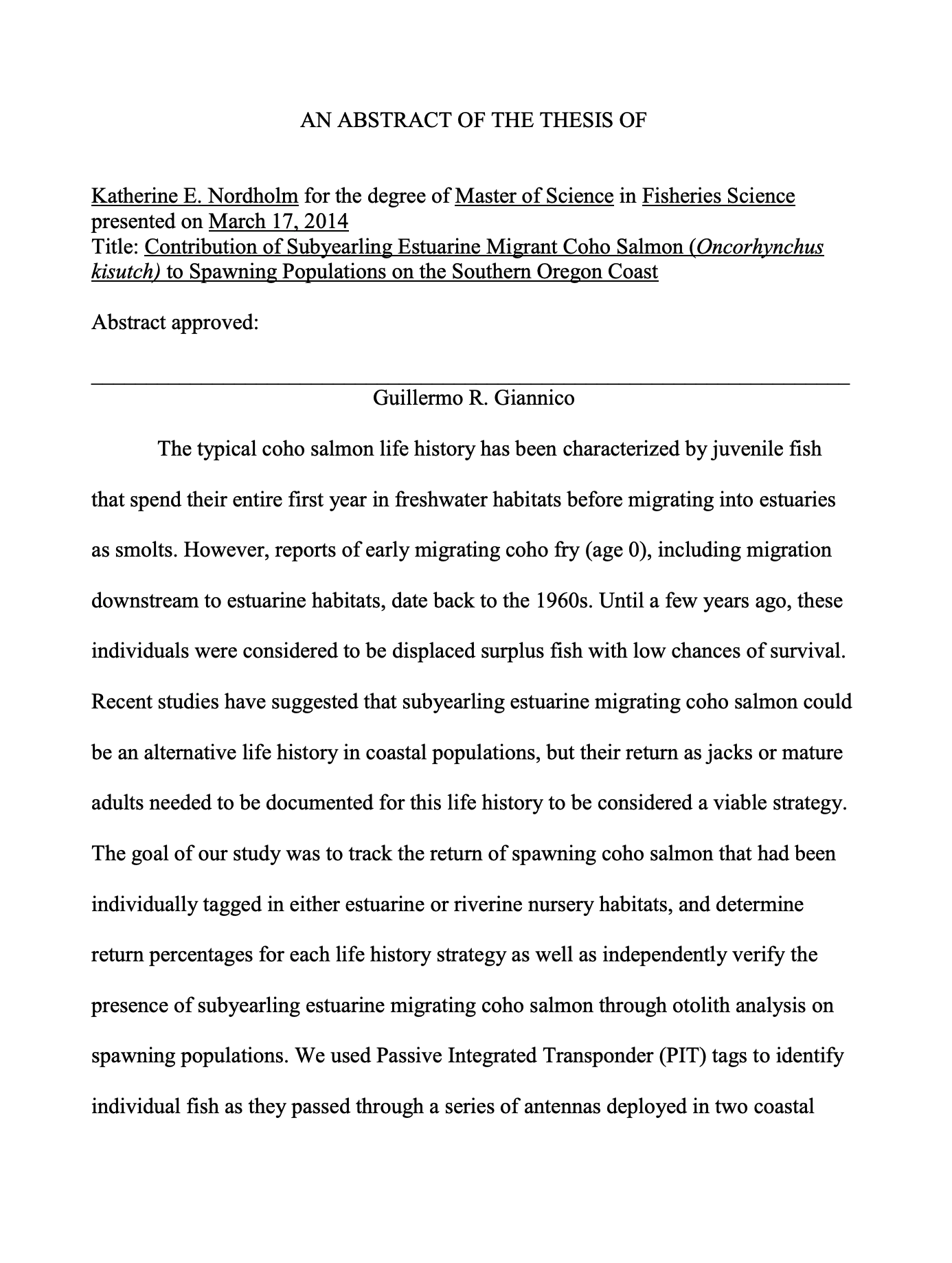
The typical coho salmon life history has been characterized by juvenile fish that spend their entire first year in freshwater habitats before migrating into estuaries as smolts. However, reports of early migrating coho fry (age 0), including migration downstream to estuarine habitats, date back to the 1960s. Until a few years ago, these individuals were considered to be displaced surplus fish with low chances of survival. Recent studies have suggested that subyearling estuarine migrating coho salmon could be an alternative life history in coastal populations, but their return as jacks or mature adults needed to be documented for this life history to be considered a viable strategy. The goal of our study was to track the return of spawning coho salmon that had been individually tagged in either estuarine or riverine nursery habitats, and determine return percentages for each life history strategy as well as independently verify the presence of subyearling estuarine migrating coho salmon through otolith analysis on spawning populations. We used Passive Integrated Transponder (PIT) tags to identify individual fish as they passed through a series of antennas deployed in two coastal lowland streams on the southern Oregon coast.
